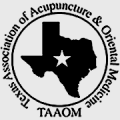Texas Chiropractic Board Sued Over Scope Expansion

CLICK HERE FOR COPY OF THE LAWSUIT
The Acupuncture Association seeks a declaration that the inclusion of acupuncture in the chiropractic scope of practice is invalid. The TAAOM asserts that the Chiropractic Board lacked statutory authority to adopt rules regarding acupuncture, that they unlawfully authorize chiropractors to perform acupuncture in violation of the Chiropractic Chapter, that the rules unlawfully authorize chiropractors to engage in the practice of acupuncture in violation of the Acupuncture Chapter; and the rules unlawfully authorize chiropractors to engage in the unauthorized practice of medicine in violation of the Medical Practice Act.
Historically, only physicians could perform many medical procedures in Texas, including chiropractic and acupuncture according to the suit. Over time, the legislature exempted various health care professionals, including chiropractors, from adhering to the requirements of the Medical Practice Act. According to TAAOM, the legislature has never completely severed the practice of acupuncture from its historical roots as a practice of medicine under the authority of the Texas Medical Board. As a result, acupuncturists continue to be subject to the supervision of the Texas Medical Board and are not excluded from the scope of the Medical Practice Act.
Further to this the TAAOM argues, the Medical Practice Act expressly excludes chiropractors from its scope and requirements, but only to the extent that chiropractors are engaged strictly in the practice of chiropractic.
The TAAOM argues that the rules adopted by the Chiropractic Board authorize chiropractors to engage in a practice that is not strictly the practice of chiropractic, and thus allow chiropractors to engage in the unauthorized practice of medicine.
In Texas, chiropractic is defined as the performance of procedures involving the spine and musculoskeletal system. In comparison, acupuncture treats and mitigates a variety of “human conditions” in various parts of the human body, not just those involving the spine and musculoskeletal system. Thus, the suit argues, acupuncture treats conditions that chiropractors are not permitted to treat under the Chiropractic Chapter and because the challenged rules authorize chiropractors to treat conditions in contravention of the Chiropractic Chapter, they are invalid.
A chiropractor in Texas may only perform procedures that are within the scope of the practice of chiropractic and in Texas all incisive and surgical procedures are expressly identified as outside the scope of chiropractic with only one exception “the use of a needle for the purpose of drawing blood for diagnostic testing.”
The Chiropractic Chapter further limits the practice of chiropractic to analyzing, examining, or evaluating the biomechanical condition of the spine and musculoskeletal system, and performing nonsurgical, nonincisive procedures, including adjustment and manipulation, to improve the subluxation complex or the biomechanics of the musculoskeletal system.
According to the TAAOM's suit, since the early 1990s the Chiropractic Board has controversially asserted that acupuncture and other procedures involving needles, such as needle electromyography, are within the scope of the practice of chiropractic.
The Texas Medical Association challenged several of these rules including allowing chiropractors to perform needle electromyography on grounds that it was an incisive procedure involving a needle, and thus was outside the statutory scope of chiropractic. The district court agreed and invalidated several of the Chiropractic Board’s rules that allowed for needle use. The Chiropractic Board repealed the rules related to needle electromyography that were declared invalid by the district court. But, the TAAOM claims, several rules remain that impermissibly allow chiropractors to use needles for other procedures, including acupuncture.
Acupuncturists licensed by the Acupuncture Board in Texas must complete at least 1,800 instructional hours from a reputable acupuncture school and satisfy at least two terms of a resident course of instruction in order to become licensed. Acupuncturists must receive training in subjects pertinent to acupuncture, including bacteriology, meridian and point locations, hygiene, and public health. In comparison, the TAAOM argues, the Chiropractic Board only requires chiropractors to complete 100 hours of training in acupuncture in order to practice the procedure.
The suit states that the Chiropractic Board’s unlawful rules create a significant threat to public safety and health because chiropractors lack the education and training to safely perform the procedure of acupuncture.
The TAAOM lawsuit asserts that because the rules in question grant chiropractors the right to perform a procedure that is outside the statutory scope of chiropractic and in which chiropractors are not competently trained, the privilege of practicing acupuncture is diminished in quality and standards. As a result, acupuncturists’ legal rights and privileges are interfered with and impaired.
Texas is just one of a number of states where chiropractors, chiropractic associations and chiropractic regulatory boards are aggresively attempting to expand their scope of practice to include practices such as acupuncture, diagnostic testing, prescription drugs, injections and Primary Care that are the domain of other health care professions.
According to Shane Walker DC, President of the International Federation of Chiropractors and Organizations (IFCO): "The introduction of acupuncture into the chiropractic scope of practice is a blurring of professional boundaries that in combination with other allopathic modalities erodes our separate and distinct status that the profession has worked so hard to obtain."
No other chiropractic organizations have weighed in on the matter. The Congress of Chiropractic State Associations and the American Chiropractic Association have a policy of "States Rights" when it comes to scope issues.
Blogs
- The Chiropractic Cartel: A Look Back at Bias in Accreditation and its Imact on Today's Profession
- Inside Montana's Chiropractic Monopoly: ACA & MCA's Brazen Board Takeover
- Concerns Grow About Control of the NY State Chiropractic Board by the ACA - Use of X-ray in NY Under Threat
- Reproductive Health Information and Chiropractic Care: Navigating New Privacy Regulations
- Navigating Substance Use Disorder (SUD) Consent: What Chiropractors Need to Know














